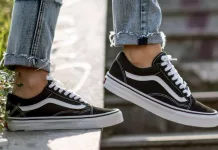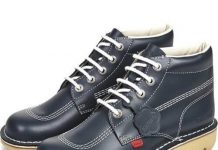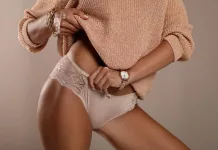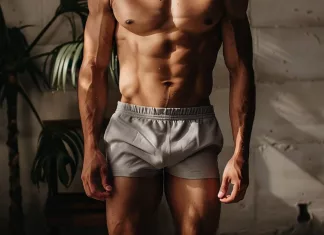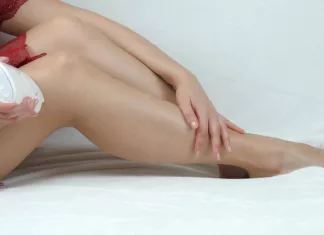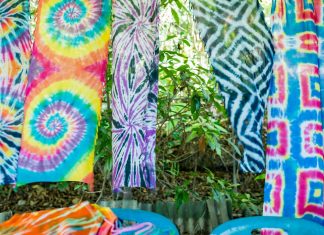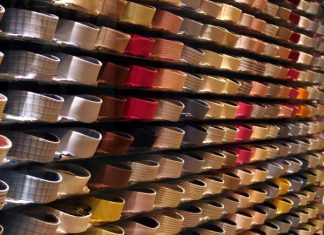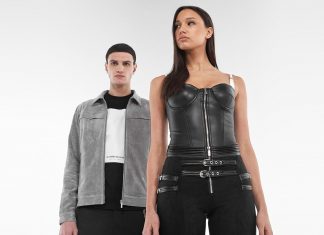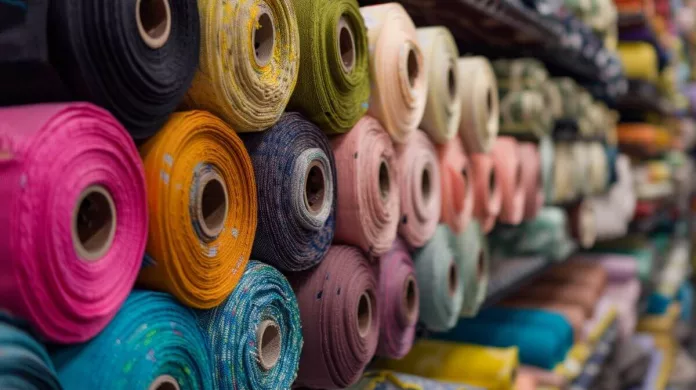
First Published: 22nd June 2023, written by Olivia Doonan | Last Updated on 25th January 2024 | Reviewed and Edited by Chloe Safilo
Clothing is a fundamental aspect of human life, and the materials used to create it have undergone significant changes over time. From natural fibres like cotton, wool, and silk to synthetic materials such as polyester and nylon, the options for types of fabric are endless.
Whether you’re looking for breathable summer wear or warm winter clothing, this article will explore the benefits and drawbacks of different fabrics, helping you make informed decisions about your wardrobe. By providing insight into the various materials used in clothing today, from knitted fabric, woven fabric, and synthetic fabrics, readers will better understand the impact of their clothing choices on both themselves and the environment.
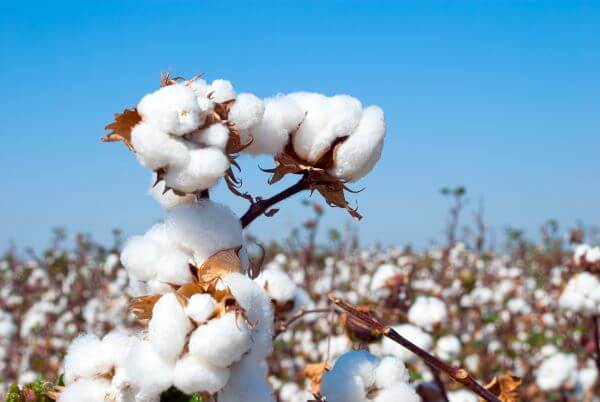
Natural Fibres
Cotton
Natural clothing materials such as cotton, known for their softness and breathability, have been used throughout history to create comfortable and versatile garments suitable for all climates and occasions; from bed sheets to t shirts to polo shirts to classic denim jeans to high-end fashion garments, cotton remains a staple in the fashion and accessories industry.
Cultivation from the cotton plant has become a major industry worldwide, with sustainability and environmentally friendly practices being adopted by many cotton producers.
Cotton fabric dyeing techniques have also evolved, with natural dyes becoming more popular as consumers become more conscious of environmental impact, from basic dyes made from flora and fauna to modern synthetic dyes to give a broader range of colours for manufacturers and consumers alike.
Wool
Wool, a highly versatile and resilient fibre, has been a staple in textile production for centuries. Woollen textiles are known for their durability and insulating properties, making them ideal for cold-weather clothing.
Woollen yarn is often blended with other fibres, such as silk or cotton, to create woven fabrics with added softness or sheen. Wool production involves shearing the wool from sheep and processing it to remove impurities before it can be spun into yarn to make a woven fabric.
Wool care is essential to maintain the quality and longevity of any woollen garments, as they can shrink or become misshapen if not correctly cared for. There are many types of wool, including Merino, Shetland, and lambs wool, each with its own unique properties.
Silk
Silk fabric is a luxurious fabric and highly prized fibre with a long history of being used in textiles for its softness, sheen, and draping qualities. Its manufacturing process involves carefully unravelling the cocoon of the silkworm and then weaving the fine, lustrous threads into fabric.
Silk is known for its natural properties of breathability, moisture-wicking, and hypoallergenic qualities. However, it requires delicate care to maintain its lustre and durability, including handwashing and avoiding direct sunlight.
Silk’s history includes its origins in ancient China and its role in trade and art across the Silk Road. Today, silk production is still concentrated in China, but other countries such as India, Thailand, and Brazil have also become significant producers. While silk remains a luxury material, technological advancements have made it more accessible to a wider market.
Linen
Linen, a plant-based fibre derived from the flax plant, has been used for centuries in textiles for its strength, durability, and natural cooling properties. Compared to other natural fibres, linen is more robust and durable, making it a popular choice for clothing and home decor. Linen is also versatile, as it can be blended with other fibres to enhance its properties.
Linen’s plain weave is ideal for summer clothing as it is lightweight, breathable, and absorbent, keeping the wearer cool and comfortable. In winter, linen can also be used as a layering fabric due to its insulating properties. To care for linen, it is recommended to wash it in cool water and avoid using bleach or fabric softeners.
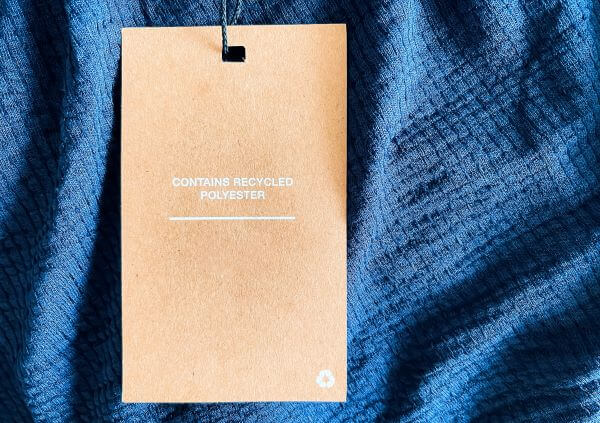
Synthetic Materials
Polyester
Polyester, a synthetic material invented in the 1940s, is known for its high tenacity and E-modulus, making it a popular choice for a variety of applications beyond just clothing.
Its durability and resistance to wrinkles, shrinking, and fading have made it a staple in the fashion industry, with polyester blends used in everything from athleisure wear to formal and casual clothing.
However, polyester fabric has been criticised for its environmental impact, with concerns over its non-biodegradable nature and use of non-renewable resources. Sustainable polyester options, such as recycled polyester made from plastic bottles, have emerged to address these concerns.
Nylon
Nylon, a synthetic, durable fabric material developed in the 1930s, is known for its strength and durability, making it a popular choice for a range of applications, from parachutes to stockings.
Its manufacturing process involves polymerising a specific type of monomer, resulting in a polymer that can be spun into fibres. However, nylon’s sustainability could be better, as it is a petroleum-based product that can decompose up to 40 years.
Rayon
Rayon, a semi-synthetic material made from regenerated cellulose fibres, has been widely used in clothing, home furnishings, and medical supplies. Rayon’s properties include its soft texture, high absorbency, and ability to drape well, making it an excellent alternative to natural fabrics like cotton.
Rayon’s manufacturing process involves dissolving cellulose fibres in a chemical solution, which is then forced through a spinneret to create filaments that are spun into yarn. This brings into question Rayon’s sustainability as it is a contentious issue, as its production often involves the use of chemicals and deforestation.
Spandex
Spandex, also known as elastane, is a synthetic polymer that was first developed in the 1950s and has since become a popular material for athletic and compression clothing due to its exceptional elasticity and shape retention.
Spandex is more stretchable than other synthetic materials and less likely to lose shape after multiple washes. Its properties make it ideal for use in athletic wear, as it allows for a full range of motion without restricting movement.
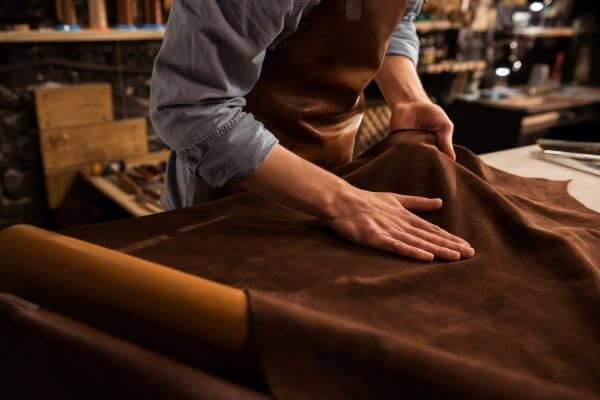
Speciality Fabrics
Denim
Denim, a durable cotton twill woven fabric made for jeans, has a rich history and has become a staple in modern fashion. Initially used by miners and cowboys for its durability, denim has evolved into a fashion trend that spans generations.
From denim jackets to skirts and accessories, denim has been incorporated into various clothing styles. However, with the rise of sustainable fashion, denim manufacturing has come under scrutiny for its environmental impact. To combat this, there has been a push towards more sustainable denim production and washing techniques.
Leather
Leather is a natural and durable, waterproof fabric used for centuries in various applications, from footwear and accessories to upholstery and bookbinding.
The tanning process of leather involves the treatment of animal hides with various chemicals to preserve and soften them. Leather comes in various types and textures, including full-grain, top-grain, split-grain, and suede, each with unique characteristics and uses.
However, the leather industry has faced criticism for its environmental impact and ethical concerns, leading to the development of alternatives and sustainable natural fabric practices.
Fur
For centuries, fur has been used in clothing and was seen as a symbol of luxury and wealth. However, with the rise of ethical concerns, fur alternatives have gained popularity. Many designers now create faux fur options that mimic the look and feel of real fur without ethical concerns.
The use of real fur has been controversial and therefore it is fading in the fashion industry for many years as the ability to produce good quality faux fur increases.
Lace
One of the most delicate and intricate fabrics in fashion history is lace, which has been used for centuries to add texture, elegance, and femininity to garments.
Lace is typically made by hand or machine from cotton fibres, silk, or synthetic materials and is characterised by its openwork design with intricate patterns of holes and shapes.
Historically, lace was a luxury item reserved for the wealthy. Still, today it is widely available and used in a variety of applications, from wedding dresses to lingerie and home decor.
Velvet
Velvet is a type of woven fabric characterised by its soft and plush texture, created by the dense pile of fibres on its surface. Historically, velvet was associated with nobility and wealth due to its high cost and difficulty to produce.
Today, velvet is used in a variety of applications, including fashion, home decor, and patterns created for upholstery. Velvet accessories and clothing items have been particularly popular in recent fashion trends, with various colour options and texture variations available.

Sheer Fabrics
Chiffon
Chiffon, a sheer, almost transparent fabric typically made of silk or nylon, has a delicate and ethereal quality, making it a popular choice for formal wear and bridal gowns.
Its lightweight fabric and sheer texture allows for effortless chiffon draping, sheer layering, and the creation of airy blouses, floaty dresses, and transparent accents.
Overall, chiffon’s sheer and delicate nature makes it a timeless fabric that is a favourite among fashion designers and fashion enthusiasts.
Organza
Organza, a sheer and crisp fabric often made of silk or synthetic fibres, is commonly used for formal wear and bridal gowns due to its lightweight and airy texture. This fabric features a unique weave that creates a subtle yet elegant sheen and can be layered for added depth and dimension.
The price range for Organza can vary depending on the fabric’s quality and the design’s intricacy. Organza can be used for layering, adding texture and dimension to an outfit. It is also suitable for warmer seasons because it is lightweight and breathable.
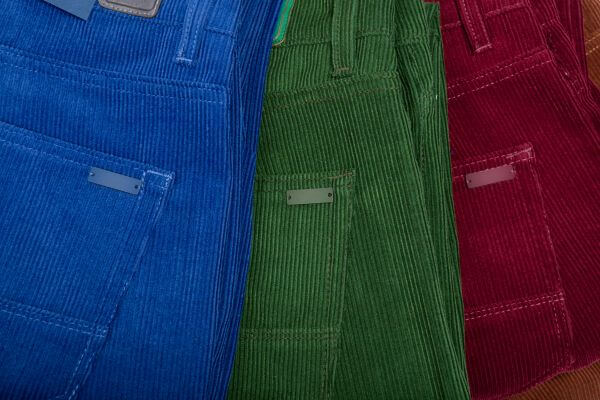
Heavy Fabrics
Fleece
Fleece, a heavy and warm fabric made from synthetic fibres, is commonly used for activewear and outdoor clothing due to its insulating properties and ability to wick away moisture from the body. Fleece’s advantages include its warmth, durability, and affordability. However, fleece’s disadvantages include its tendency to pill and its negative impact on the environment due to the use of synthetic materials.
Fleece fashion includes a range of styles, from activewear to casual wear. Fleece insulation is one of its most essential properties, making it ideal for cold-weather clothing. Fleece’s history dates back to the 1980s, when it was first introduced as a synthetic replacement for wool. Fleece innovation continues, with new blends and technologies being developed to improve its performance and sustainability.
Corduroy
Corduroy is a unique fabric that has regained popularity in recent years due to its texture and durability. Corduroy is a thick, ribbed fabric that is made from cotton or a cotton blend. The benefits of corduroy include its comfort, durability, and versatility.
Its history dates back to the 18th century when it was originally used for workwear due to its durability. Today, corduroy has made its way into mainstream fashion and continues to be a popular choice for those looking for a stylish and practical fabric.
Tweed
Originally made from rough wool fibres, the fabric was often used for outdoor clothing and hunting attire due to its ability to withstand harsh weather conditions. Compared to other heavy fabrics, wool tweed is often considered more versatile, as it can be worn in cold and mild climates and for casual and formal occasions.
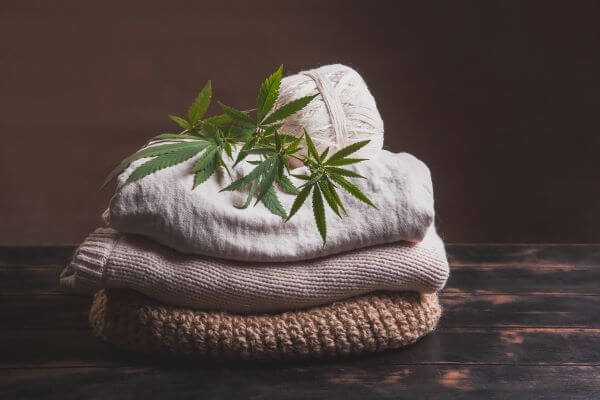
Eco-Friendly & Sustainable Fabrics
Hemp
Hemp, a highly sustainable crop, has gained popularity as an eco-friendly alternative to traditional clothing materials.
Hemp clothing offers numerous benefits, such as being durable, breathable, and resistant to mould and bacteria. It is also hypoallergenic, making it an excellent choice for those with sensitive skin.
Hemp requires less water and pesticides than cotton, making it a more sustainable option. However, hemp clothing has some drawbacks, including its tendency to wrinkle easily and the fact that it can be difficult to dye.
Bamboo
Bamboo is another sustainable plant-based resource that has become increasingly popular as an eco-friendly alternative in various industries, including fashion.
The benefits of bamboo, because of its different treatment techniques are numerous, including its sustainable production and low environmental impact. Bamboo clothing is also known for its comfort, durability, and versatility in styles.
Organic Cotton
Organic cotton is produced without the use of harmful pesticides and chemicals, making it a more environmentally friendly option. The benefits of using organic cotton extend beyond its sustainability, as it also offers comfort and durability.
While the cost of cotton grown organically may be higher than conventional cotton, the environmental impact and ethical considerations make it a worthwhile investment. As the global market continues to shift towards more sustainable practices, incorporating organic cotton into fashion trends will play a significant role in reducing the fashion industry’s negative impact on the environment.

Blends
Cotton-Polyester
One very popular blend for clothing is cotton polyester, which combines the natural breathability and softness of cotton with the durability and quick-drying properties of polyester.
Cotton-polyester blends offer several benefits, including affordability, easy care, and resistance to wrinkles and shrinking. Cotton-polyester blends are commonly used in lightweight garments, athletic wear, workwear, and home decor, as well as in fashion.
Wool-Cashmere
The blend of wool and cashmere offers a luxurious and warm option for creating high-quality garments. Wool cashmere blends provide a soft and comfortable feel while also being durable and long-lasting. These blends are perfect for colder seasons, as they provide excellent insulation and warmth. However, they may not be suitable for warmer weather due to their heavier weight.
Silk-Cotton
Blending silk and cotton creates a luxurious and versatile fabric that offers a smooth and lightweight texture, making it ideal for creating comfortable and stylish clothing for a multitude of occasions.
Different types of cotton blends, such as Pima and Supima, can be blended with silk to create different textures and finishes.
Rayon-Spandex
Combining the stretchy and form-fitting properties of spandex with the softness and durability of rayon results in a versatile fabric that is commonly used in athletic and casual wear.
However, care instructions must be followed closely to maintain the integrity of the fabric, as it can easily lose shape and become damaged if not handled properly.
Conclusion
In conclusion, clothing materials play a significant role in determining the overall functionality and comfort of the clothing. The different types of natural fibres, such as cotton, wool, silk, and linen, offer unique properties that make them suitable for various types of clothing. On the other hand, synthetic materials like polyester provide durability and affordability, making them a popular choice for many.
Heavy fabrics like tweed are ideal for colder temperatures, while eco-friendly materials like hemp, bamboo, and organic cotton are gaining popularity due to their sustainable and environmentally friendly properties.
When choosing clothing materials, it is essential to consider the intended use and climate. Understanding the properties of different fabrics can help individuals make informed choices when it comes to their wardrobe.
Individuals can stay comfortable, fashionable, and environmentally conscious by selecting the right clothing materials. Ultimately, the choice of clothing material is personal, and individuals should choose fabrics that best suit their style, budget, and lifestyle.







